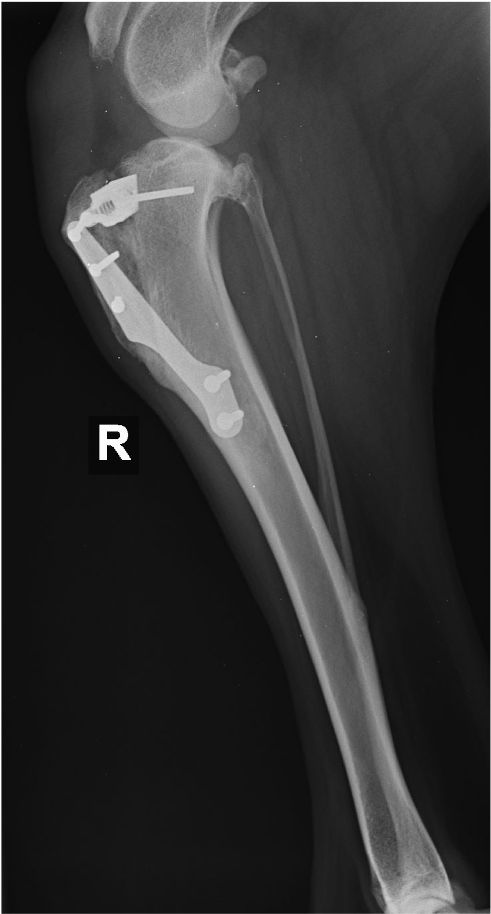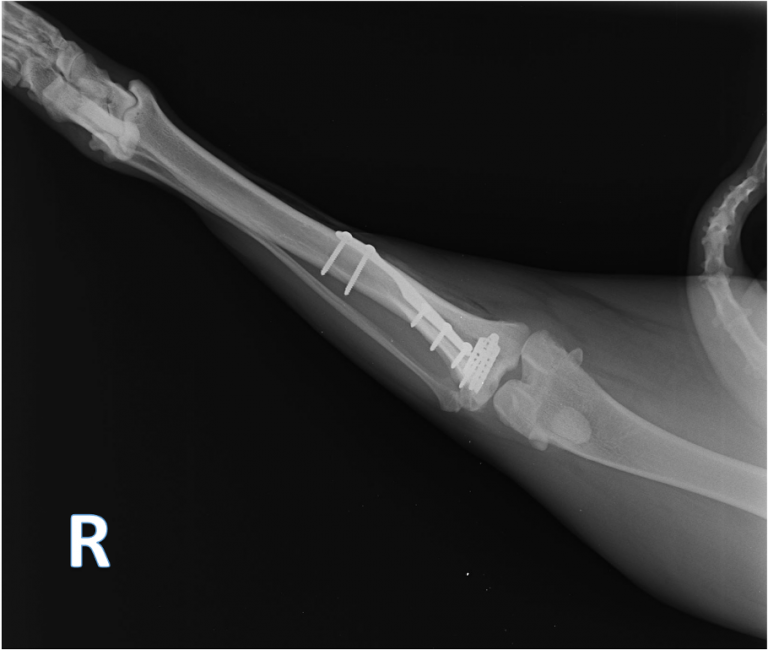Cruciate Ligament Disease
The cruciate ligaments are two ligaments located in the knee joint (stifle) and form an ‘X’. They prevent forward, backward and rotational movement of the knee joint. Damage to the anterior cruciate ligament is reasonably common, particularly in large breed dogs and injury can vary from chronic changes (over a long period of time) to acute injury that results in a non-weight bearing lameness. Typically large and giant breeds may show signs from as early as 3-5 years old while smaller dogs tend to become clinical later at 6-8 years of age.
Injury
Partial or complete rupture of the cranial (anterior) cruciate ligament is a very common injury in the dog and occasionally occurs in cats. Rupture causes instability of the stifle (knee) joints. This also causes acute pain and over time leads to degenerative joint disease or osteoarthritis. Quite commonly, there is also a tearing of the meniscus (cartilage) within the joint.
Diagnosis
Diagnosis may be possible at the initial consultation. However most awake patients are sore and nervous, and tense the muscles of the leg, making it impossible to feel the instability in the joint. This is particularly true for large dogs and dogs with partial ACL tears. Not all cruciate disease will show a major instability either thus an anesthetic, examination and radiographs are used to diagnose or at least confirm most cases.Treatment
Without surgical repair, dogs with ACL lameness never return to pre injury activity levels without recurrent lameness. Over time they will develop degeneration and arthritis within the joint. Surgery is therefore recommended for any dog with ACL damage. It is important to realize that despite surgery there will always be some arthritis in the joint but this will be minimized by surgery. At TRVC we offer both a de – angelis (extracapsular) repair and a TTA (tibial tuberosity advancement). We also have the option of referral to a registered specialist in surgery.Surgical Options
- Extra-capsular Repair: This procedure also known as a de angelis is often used in private practice. This procedure essentially replaces the old ligament without realigning the joint. This is often termed a bandaid procedure, as there is still a risk of repeat rupture of the new ligament. This procedure is only performed in dogs under 10kg.
- Tibial Tuberosity Advancement (TTA): This procedure is more advanced and not performed at all veterinary clinics. The TTA involves realignment of the joint to allow near normal function and once fully recovered there is no chance of repeat failure. This is the ideal procedure for all patients but the only option for any dogs over 15kg. The recovery from this procedure is exceptional with most dogs’ big and small walking 1-2km by 2 weeks post-operative.
- Registered Specialist procedure: The main difference is that a registered specialist can arthroscopically examine the inside of the joint instead of opening up the joint surgically as a general practice will do. They may also advocate an alternative extracapsular type repair called a ‘tightRope’ procedure.


